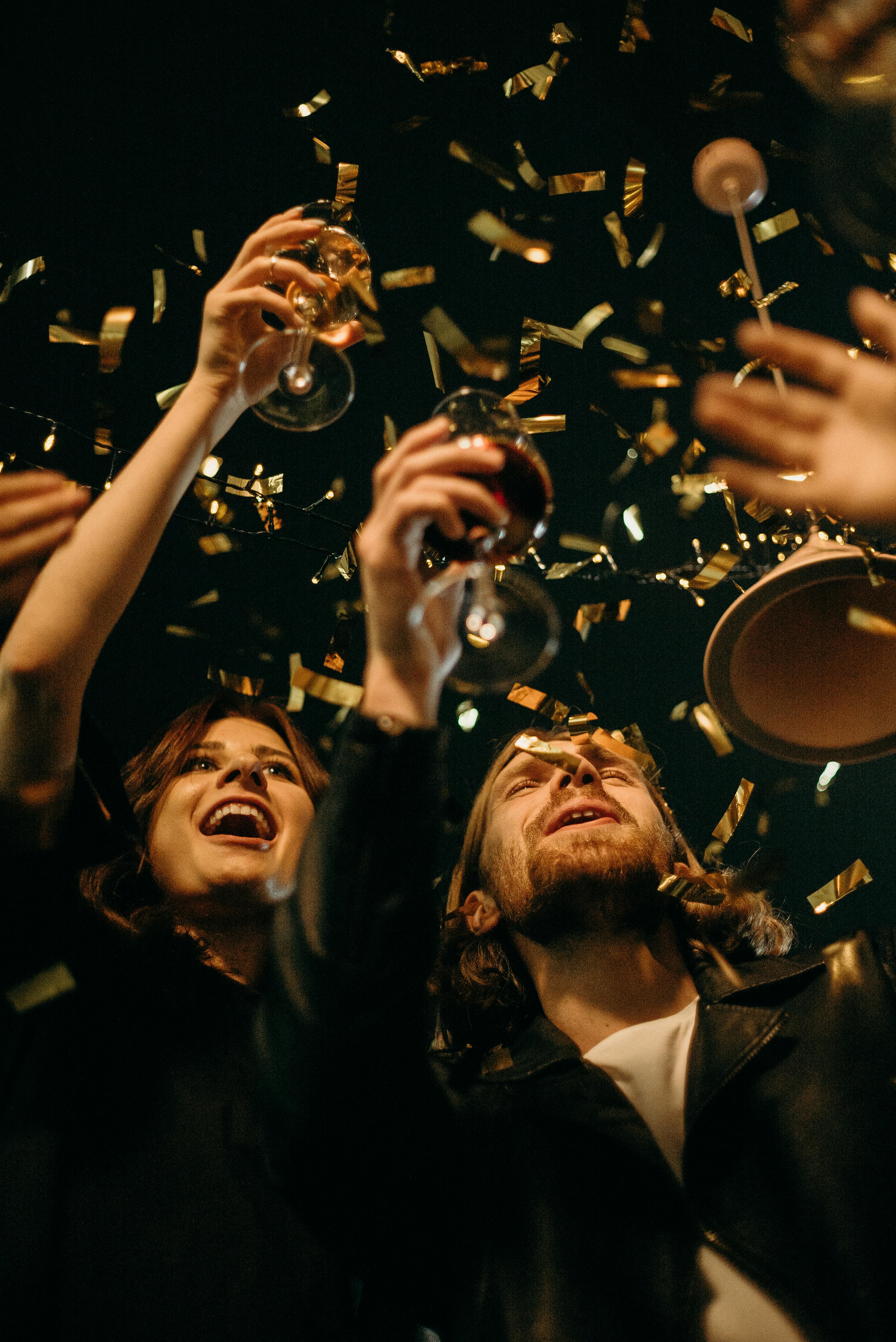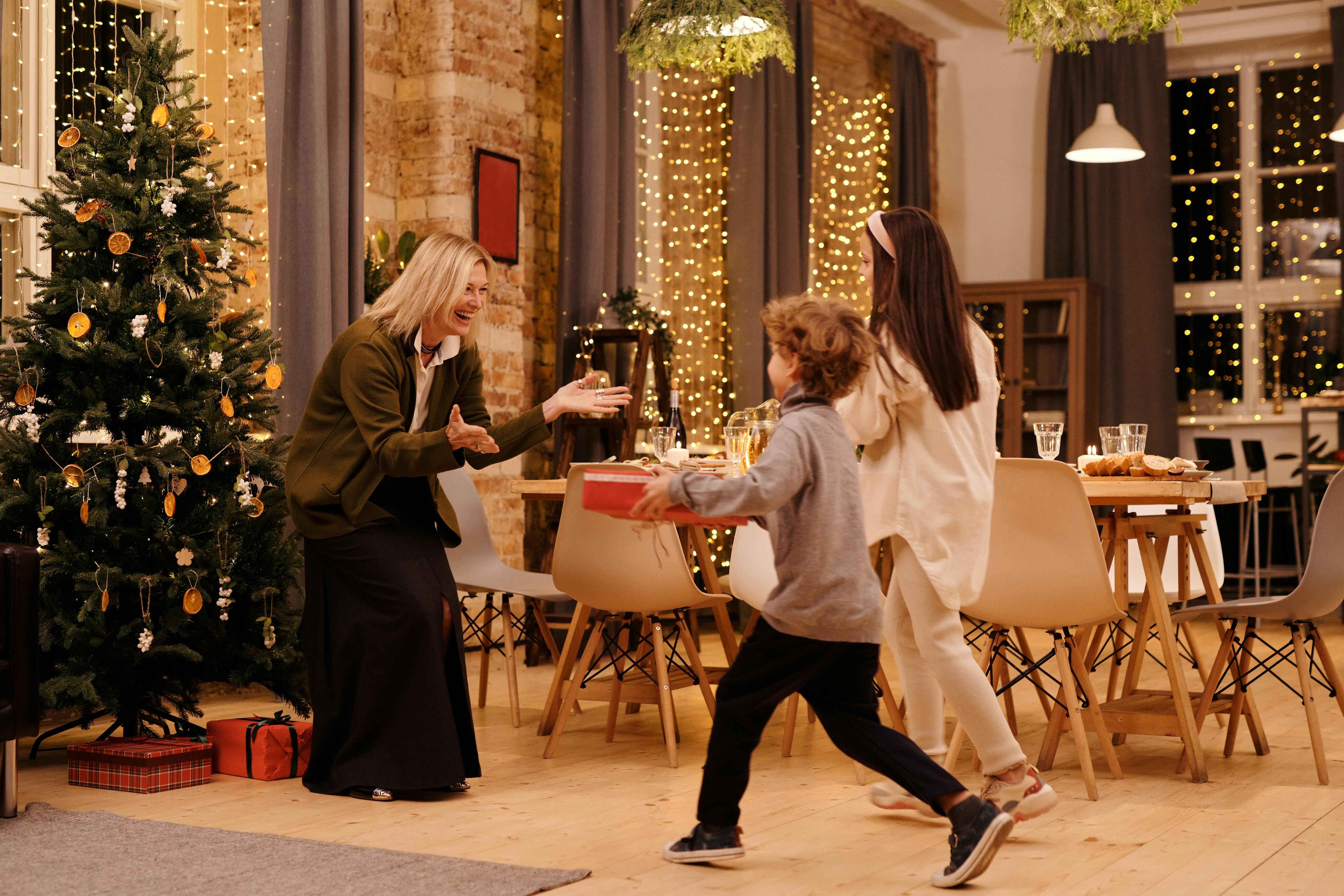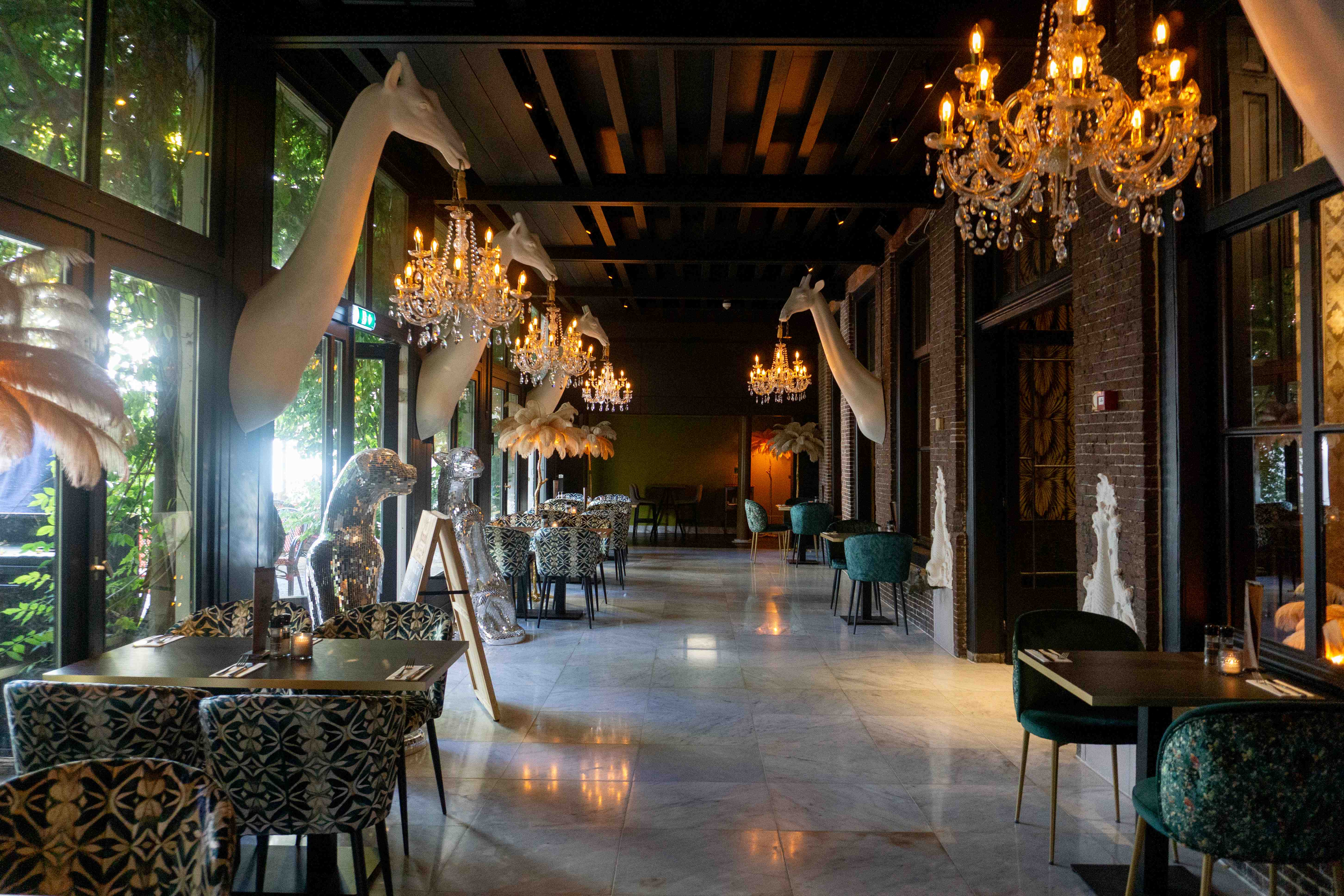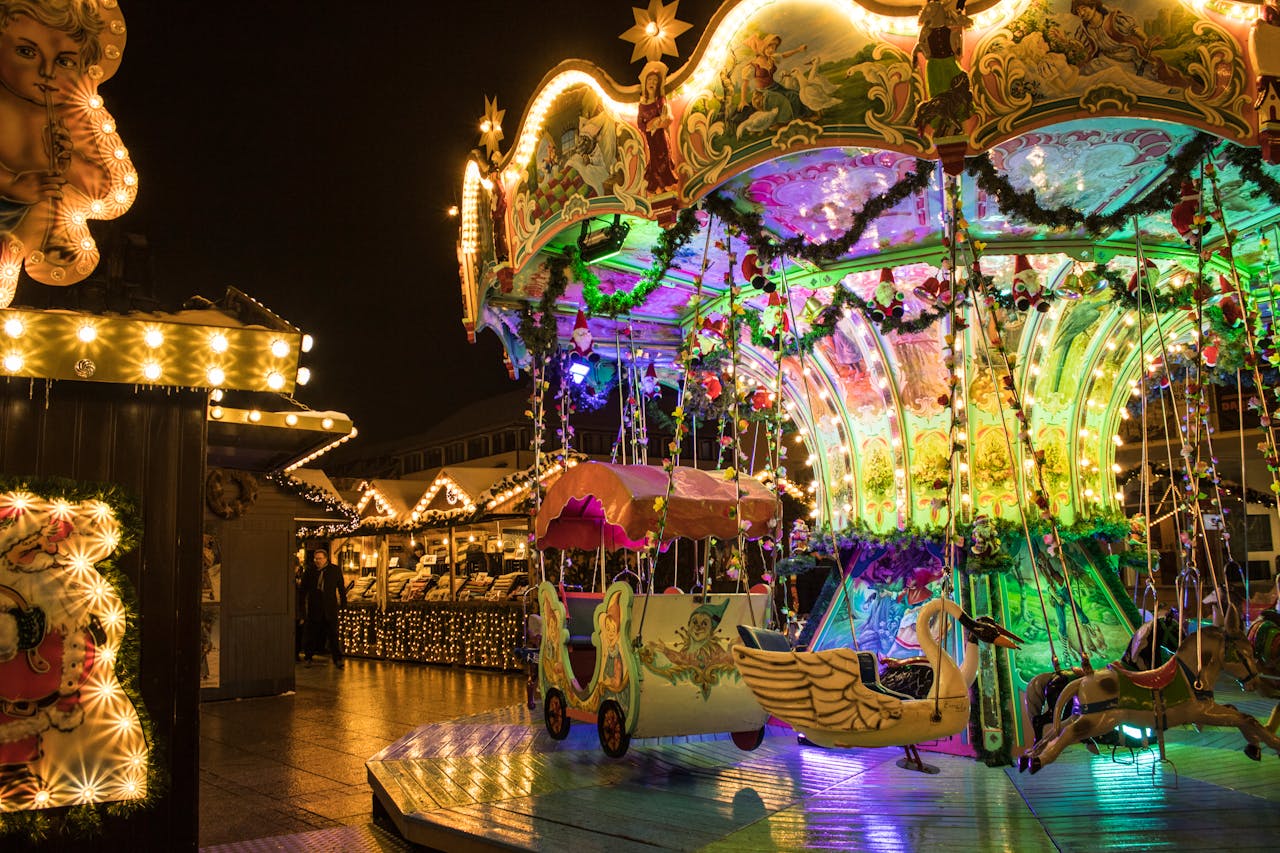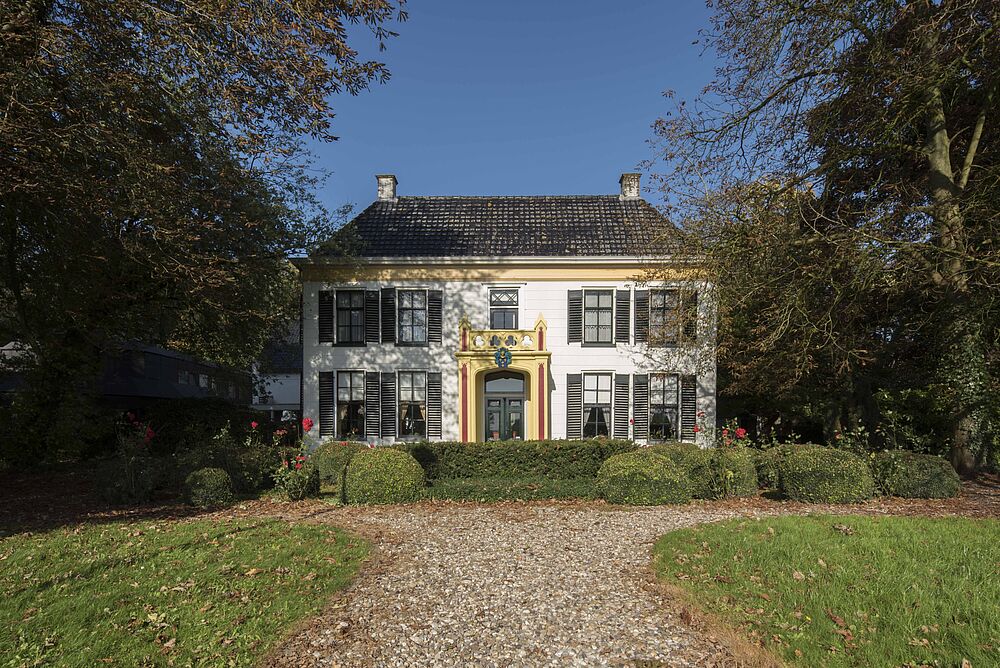
Hotel Landgoed Ekenstein
The name Ekenstein was created by Johan Eeck, the mayor of Groningen, who bought the estate in 1648 and had the manor built on the remains of an older structure, likely dating back to the early 16th century. Just nearby lies Rusthoven, founded by his son.
The Alberda Family of Ekenstein: You might recognize the name Alberda from Menkemaborg. In 1754, Onno Joost Alberda purchased the manor and began using the name ‘Van Ekenstein’. The Alberda family owned the manor until the end of the 19th century.
Major Renovations: The original house where Johan Eeck lived has hardly survived. In 1869, the Alberda family had the manor extensively renovated by H.J.H. Groneman. Ekenstein took on a neoclassical appearance with elements of the neo-gothic style. Fragments from older buildings, such as a facade stone from Ewsum manor, were incorporated into the new design.
The Treasury House: When Onno Joost purchased the estate, he also had a treasury house built. In the 19th century, this was converted into a large barn, which is now available for rent for events and gatherings.
Ekenstein Today: After the Alberda family left, the manor fell into disrepair. In 1946, the municipality of Appingedam purchased the estate and fully restored it. The garden became public property, and the manor was turned into a hotel. Today, the Pels family owns Ekenstein.
The Hunting Room: This late 18th-century room was used by the Alberda family to entertain guests. The original linen wallpaper is painted with landscapes and hunting scenes.
The Knight's Hall: The Knight's Hall is built in typical neo-gothic style with a turquoise coffered ceiling, high wainscoting, and an authentic wooden fireplace flanked by twisted columns. During the day, light streams in through the stained-glass windows, while at night, a chandelier made of deer antlers illuminates the room.
The Gardens: The beautiful winding garden, designed by L.P. Roodbaard, is now open to the public. This garden is a typical English landscape garden with winding paths and long serpentine ponds. It was restored by the municipality of Appingedam in 1966.
A Garden in Two Parts: The garden of Ekenstein consists of two parts, each with its own pond in the center. The rear part of the garden, featuring a forest edge, is probably the oldest, while the part surrounding the manor is newer.
The Productive Garden of Ekenstein: When Onno Joost Alberda purchased the manor, the emphasis was placed on the practical use of the gardens, with fruit trees, asparagus beds, and a vegetable garden. After the transition to a landscape garden, little remains of the productive garden.
The Deer Park and Petting Zoo: On the northern side of the garden lies a deer park, with a petting zoo nearby. These were added when the municipality of Appingedam restored the area and were not part of Roodbaard's original design.

